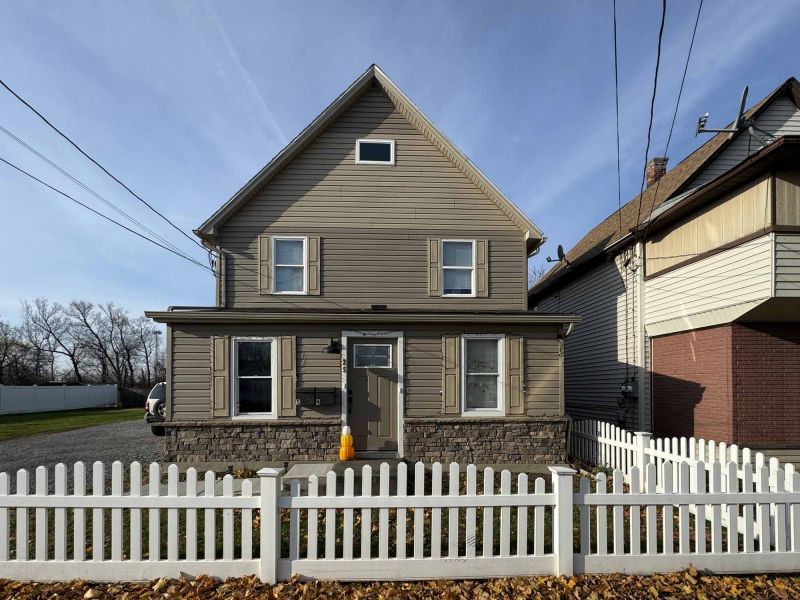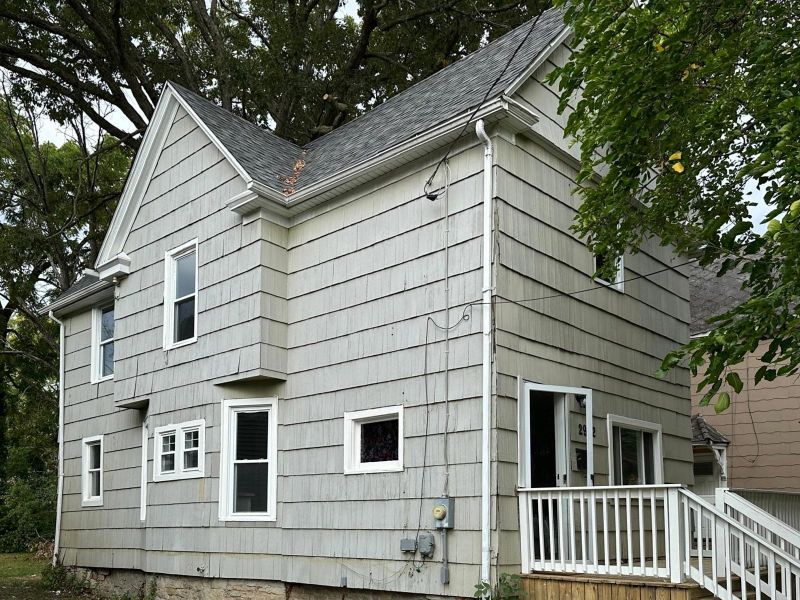Comparing Buffalo and Pittsburgh Economies in 2026
As of November 2025, both Buffalo (NY) and Pittsburgh (PA) are Rust Belt cities undergoing post-industrial reinvention, leveraging healthcare, education, and tech while grappling with legacy challenges like population stagnation and fiscal strains.
For 2026, one year ahead, my projections show Pittsburgh edging out Buffalo in overall growth (1.8-2.2% vs. Buffalo’s 1.2–1.5%), driven by its larger scale, diversified tech/innovation ecosystem, and infrastructure wins like the $1.4B Pittsburgh International Airport modernization (completing in 2025). Buffalo, however, shines in affordability and tourism recovery, positioning it as a “scrappier underdog” with potential to close the gap via waterfront revitalization and cross-border trade.Both metros benefit from national tailwinds (e.g., Fed rate stabilization, consumer spending rebound), but face headwinds like inflation (2.5–3% projected) and tariffs impacting manufacturing/logistics. Pittsburgh’s MSA (2.37M people) dwarfs Buffalo’s (1.16M), giving it more economic mass. Unemployment should align closely (4.0–4.2% for both), but Pittsburgh’s wages average higher ($1,380/week vs. Buffalo’s $1,320). GDP growth: Pittsburgh ~2.0% ($180B total), Buffalo 1.5% ($65B).Key Economic Metrics Comparison (2026 Projections)Based on BLS (Sep 2025 updates), regional forecasts (e.g., PNC for Pittsburgh, Erie County CEDS for Buffalo), and economist panels.
| Metric | Buffalo | Pittsburgh | Edge |
|---|---|---|---|
| Total Nonfarm Employment | ~570,000 (+1.2% from 2025) | ~1,170,000 (+1.8% from 2025) | Pittsburgh (scale + diversification) |
| Unemployment Rate | 4.0–4.2% | 3.9–4.1% | Pittsburgh (tighter labor market) |
| Avg. Weekly Wage | $1,320 | $1,380 | Pittsburgh (+4.5%; tech/health premiums) |
| GDP Growth | 1.5% (~$65B total) | 2.0% (~$180B total) | Pittsburgh (innovation-driven) |
| Housing Market | Median home: $255K (+2.4% YoY); rents stable | Median home: $285K (+3.1% YoY); rents +2% | Pittsburgh (stronger appreciation) |
| Cost of Living Index (U.S. avg=100) | 85 (affordable; groceries/energy low) | 92 (higher utilities/housing) | Buffalo (19% cheaper overall per Numbeo) |
| Consumer Sentiment | Stable but negative (Q3 2025: -7% YoY) | Mildly positive (Q3 2025: +2% YoY) | Pittsburgh (optimism from airport/tech) |
Sector-by-Sector Breakdown (2026 Projections)
Extrapolating from 2025 BLS data and local plans (e.g., Pittsburgh Regional Alliance, Buffalo’s 2025-26 Budget at $622M). Growth assumes no recession; Pittsburgh leads in high-value sectors.
| Sector | Buffalo (2025 Jobs / 2026 Proj. Change) | Pittsburgh (2025 Jobs / 2026 Proj. Change) | Comparison Notes |
|---|---|---|---|
| Healthcare & Education | 101,500 / +1.5% (~1,500 jobs) | 280,000 / +2.2% (~6,200 jobs) | Pittsburgh dominates (UPMC, Carnegie Mellon hubs); Buffalo strong via Roswell Park/UB but smaller scale. |
| Leisure & Hospitality (Tourism) | 59,500 / +4.0% (~2,400 jobs) | 110,000 / +3.5% (~3,850 jobs) | Buffalo’s Niagara edge for events; Pittsburgh’s cultural draw (e.g., Strip District) + airport boost. |
| Trade, Transportation & Utilities | 101,200 / +1.8% (~1,800 jobs) | 210,000 / +2.0% (~4,200 jobs) | Tie—both border hubs (Canada for Buffalo, logistics for Pittsburgh); tariffs risk both. |
| Professional & Business Services | 88,200 / +1.5% (~1,300 jobs) | 220,000 / +2.5% (~5,500 jobs) | Pittsburgh wins big (AI/tech via Google/Amazon investments); Buffalo growing via startups. |
| Manufacturing | 53,000 / +0.5% (~265 jobs) | 85,000 / +1.0% (~850 jobs) | Pittsburgh rebounding faster (e.g., green steel, EVs); Buffalo’s advanced mfg. lags. |
| Government | 90,000 / +0.8% (720 jobs) | 180,000 / +1.0% (1,800 jobs) | Pittsburgh (state/federal ties); Buffalo’s $622M budget strains pensions/transit. |
| Construction | 22,600 / +2.0% (~450 jobs) | 50,000 / +2.5% (~1,250 jobs) | Pittsburgh surges (airport, Hill District bridge); Buffalo steady on waterfront/brownfields. |
| Retail & Other Services | 130,000 / +1.0% (1,300 jobs) | 250,000 / +1.5% (3,750 jobs) | Pittsburgh broader consumer base; both benefit from gig economy rise. |
Opportunities: Where They Align and Diverge
- Shared Strengths are that both pivot to “eds and meds” (education/medicine) for stability – Pittsburgh’s Carnegie Mellon/UPMC model inspires Buffalo’s BNMC expansions. Tourism rebounds (e.g., Buffalo’s waterfront events, Pittsburgh’s 2026 World Cup prep) could add 5,000+ combined jobs. Affordability draws remote workers; gig economy thrives in both.
- Buffalo’s Edge is cheaper living (e.g., $5,934/month in Pittsburgh vs. $5,000 in Buffalo for same lifestyle) attracts young families. Cross-border Canadian influx (~11.5M in “Golden Horseshoe” by 2031) boosts trade/tourism more than Pittsburgh’s.
- Pittsburgh’s Edge is tech/innovation ecosystem (e.g., AI investments, Shell Polymers plant) fuels higher wages and GDP. Airport modernization positions it as a regional hub, drawing international business Buffalo lacks.
Challenges: Common Ground with Local Twists
- Fiscal Pressures
Buffalo’s 2025-26 budget debates cuts to transit amid pension hikes; Pittsburgh faces similar but at larger scale (e.g., infrastructure debt). Both vulnerable to federal policy shifts (tariffs hit mfg./trade). - Demographics & Equity
Population growth minimal (Buffalo +0.5%, Pittsburgh +0.8%); income gaps persist (Buffalo median household ~$60K, Pittsburgh ~$68K). Both target underserved groups via training, but Pittsburgh’s diversity initiatives (e.g., CWG for 2025-26 plan) are more resourced. - External Risks
Consumer confidence dips (Buffalo more negative); inflation/tariffs could slow growth to <1% for both. Pittsburgh’s Nippon Steel–U.S. Steel deal adds uncertainty for mfg. jobs.
In essence, Pittsburgh in 2026 feels like the “polished revival”, a tech-savvy powerhouse with steady momentum, while Buffalo is the “hungry contender”, affordable and gritty, aspiring to Pittsburgh’s playbook but constrained by size. Pittsburgh’s trajectory suggests ~8,000–10,000 net new jobs vs. Buffalo’s 7,000–9,000, but Buffalo’s lower costs could yield higher quality-of-life gains. If Buffalo nails equity-focused investments (per CEDS), it could narrow the gap by 2030. Grounded in 2025 data; actuals depend on policy (e.g., no recession). Want a deeper dive on a sector or metric?
Get in Touch
-
 Alan Findlay
Alan Findlay

